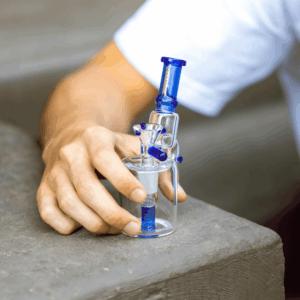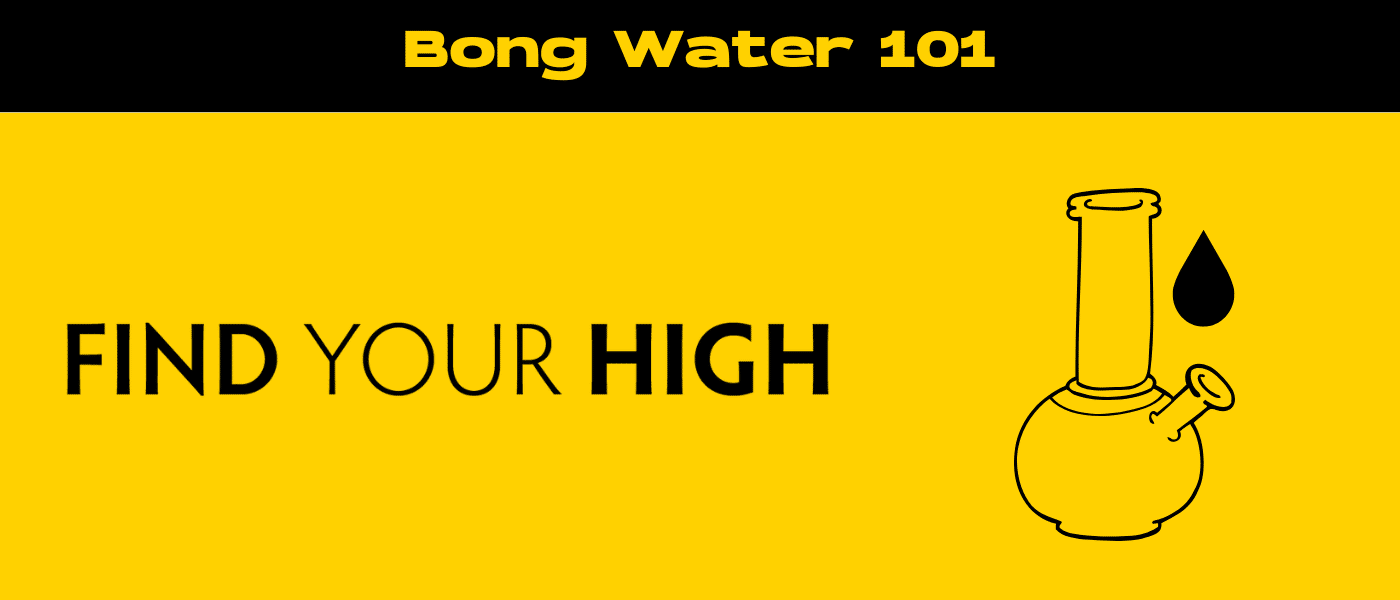When it comes to getting the best out of a bong, most smokers think about strain choice, bowl packing techniques, or even whether to use ice. But one overlooked factor can make all the difference: the water level. If you’ve ever taken a hit that felt harsh, or worse, had dirty bong water splash up into your mouth, you know the struggle is real. So, how much water do you put in a bong? The answer is both simple and flexible—it’s about finding the perfect water level that matches your bong’s size, your smoking style, and your personal preference.
The right amount of water doesn’t just cool down hot smoke; it also acts as a filtration device, removing ash and harmful substances from each pull. That balance can mean the difference between an irritating dry hit and a smoother hit that keeps your respiratory system happier.
In this guide, we’ll break down how much water you should put in a bong, explore how bong design affects the amount you pour in, and share practical tips for testing and adjusting until you find your sweet spot.
What’s the Purpose of Water in a Bong?
Before you figure out how much water to put in a bong, it helps to understand why the water is there in the first place. The bong is a water pipe smoking accessory designed to make smoking cannabis a more enjoyable smoking experience. The water acts as a natural filtration system. As you draw smoke through the water, it filters out ash, plant matter, and some harmful substances that would otherwise head straight into your lungs as unfiltered concentrate smoke.
But beyond that, bong water plays another key role: temperature control. Without enough water, you end up inhaling hot smoke that scorches your throat and chest. With the right balance, the water cools the smoke, creating cool hits that feel smooth on the inhale. In other words, bong water is a built-in comfort and health tool—it filters, cools, and smooths the entire filtration process, setting bongs apart from traditional smoking methods like dry pipes.

The Standard Rule of Thumb for Bong Water
So, how much water should you actually put in a bong? The rule of thumb is simple: pour water until the water covers the bottom of the downstem by about a half inch. That half inch of coverage is enough for the smoke to pass through the water and create smaller bubbles for smooth filtration.
If you’re wondering why “about a half inch” matters so much, it’s because that amount ensures the downstem slits are completely submerged. Covering all the slits means the smoke filters evenly, avoiding the harshness of a dry bong or the choking drag caused by excess water. It’s a small adjustment that makes a huge difference for optimal performance, especially if you’re aiming for a smoother hit every smoking session.
Factors That Affect How Much Water to Use
While the half inch guideline works for many setups, how much water you put in a bong depends on several factors:
- The bong’s size: Smaller bongs need less water; large glass bongs require more.
- Bong shape: Beaker bongs tend to hold more water than straight tube bongs because of their wider bases.
- Downstem length: A longer downstem means you’ll need to pour more water to ensure all the slits are submerged.
- Filtration system: Percolator bongs, especially those with multiple chambers, require separate water levels for each perc.
- Smoking style: If you prefer big, milky bong hits, you might lean toward filling a little more water to create resistance, while lighter smokers often prefer less drag for easier pulls.
Together, these factors influence how much water flows through the bong during use. A beaker bong and a straight tube bong won’t share the same sweet spot, so you’ll want to experiment until you find just the right amount.
Small Bongs: Finding the Right Water Level
Small bongs are a favorite for portability and convenience, but they require extra attention when it comes to filling. Because of their size, it doesn’t take much water to cover the downstem slits. Just enough water to cover them by about a half inch is usually perfect.
The risk with small pieces is adding too much water, which quickly leads to water splashing into your mouth. Nobody wants to sip dirty water during a smoking session. A good trick is to fill a bong just above the downstem, take a test pull without lighting, and listen for a bubbling sound. If it bubbles smoothly without splashing, you’re good to go.
Medium and Large Bongs: Adjusting for Volume
Medium and large glass bongs provide bigger chambers for cool smoke and smoother hits, but that also means more room to mess up the water level. Adding enough water to cover all the slits is crucial, but pouring too much water will cause excess drag. You’ll feel like you’re fighting to draw smoke instead of enjoying it.
For larger water bongs, the trick is incremental filling. Pour water slowly, test with a dry pull, and keep adjusting. The perfect water level is one where you hear bubbling without splashing, and the pull feels natural. Remember that taller bongs often require more fine-tuning since water flows differently in their longer chambers.
Percolators and Their Impact on Water Levels
A percolator bong is designed for additional filtration, which can dramatically improve the smoking experience—but only if you get the water levels right. Different types of percs, like tree percs, showerheads, or honeycombs, all create smaller bubbles for smoother hits. But here’s the catch: each perc chamber may require its own fill line.
If you overfill a percolator bong, you’ll notice excess water in multiple chambers, which creates too much drag. Underfill it, and the percs won’t function, leaving you with harsh, unfiltered smoke. The key is to pour water until each chamber is just activated during a dry pull. With multiple chambers, always test carefully—getting it right makes all the difference between average bong hits and an enjoyable smoking experience.
Signs Your Bong Has Too Much Water
Overfilling is one of the most common mistakes people make when they fill a bong. If there’s too much water in your bong, you’ll notice it immediately. Some key signs include:
- Splashback into your mouthpiece during a pull.
- A bubbling sound that seems overly gurgly or flooded.
- Water splashing into the bowl.
- Difficulty pulling, as if you’re sucking against resistance.
Excess water not only ruins the smoking session but also risks pulling dirty water into your mouth. Remember: water in a bong should improve smoothness, not create a mess.

Signs Your Bong Doesn’t Have Enough Water
On the flip side, a dry bong with not enough water leaves you with harsh, hot smoke. If you’ve ever coughed uncontrollably after a hit, chances are your bong water level was too low. Signs of underfilling include:
- Harsh hits that feel like inhaling fire.
- Very little bubbling when you draw smoke.
- Hot smoke that irritates your throat.
- Unfiltered smoke carrying ash into your mouth.
Without enough water, the bong’s filtration process doesn’t work. You’ll miss out on smoother hits and end up damaging your respiratory system with unfiltered smoke.
Testing the Water Level Before Lighting Up
The easiest way to avoid mistakes is to test before sparking up. A dry pull test is essential: inhale through the mouthpiece without lighting the bowl. You should hear a bubbling sound, feel smooth airflow, and notice that water isn’t splashing into your mouth.
Another good trick is the tilt test. Gently tilt your glass bong forward and back—if water splashes into the bowl or mouthpiece, there’s too much water. By making these checks before packing your bowl, you’ll ensure an enjoyable smoking experience every time.
Personal Preference: Finding Your Sweet Spot
While there are general guidelines, how much water you put in a bong ultimately comes down to personal preference. Some smokers enjoy heavier drag because it delivers denser bong hits, while others prefer a smoother hit with minimal resistance.
Your smoking style, lung capacity, and even whether you prefer warm water, cold water, or fresh water can affect what feels best. Trial and error will help you discover your sweet spot. For many, the perfect water level is when the water covers all the slits and delivers cool smoke without excess drag—but don’t be afraid to adjust based on what feels good to you.

Common Mistakes When Filling a Bong
Plenty of smokers make mistakes when figuring out how much water to put in a bong, especially if it’s their first water pipe. Common errors include:
- Overfilling and dealing with water splashing.
- Underfilling and taking harsh, dry hits.
- Forgetting to adjust percolator bong chambers.
- Skipping the dry pull test.
Each mistake can turn what should be a smooth smoking session into a cough-filled disaster. Fortunately, they’re easy to avoid once you know what to look for.
How Often Should You Change Bong Water?
Even if you find the perfect water level, leaving bong water sitting around ruins the smoking experience. Bong water regularly needs to be changed—ideally after every smoking session. Dirty water quickly becomes a breeding ground for bacteria and mold, not to mention the foul smell and taste it adds.
Fresh water not only tastes better but also ensures smooth filtration and optimal performance. Think of it like this: would you drink from the same glass of hot water day after day without rinsing it? The same principle applies to your water bong. If you want cool hits and healthier smoke, change your bong water regularly.
Tips for Maintaining Fresh and Balanced Water Levels
Getting the water level right is one thing, but keeping it fresh is another. Some useful tips include:
- Use filtered or fresh water for a cleaner taste.
- Experiment with water temperature: cold water for cool smoke, warm water for a softer inhale, or hot water for a different experience.
- Add ice if your glass bong has an ice catcher, but avoid using ice as a replacement for enough water.
- Mark your sweet spot: place a small sticker or piece of tape on the outside of the bong to remember your perfect water level.
- Pour slowly: always pour water in small amounts and test frequently.
These little steps make a huge difference in maintaining smoother hits and ensuring your water filtration system works the way it should.

Conclusion: Perfecting the Bong Water Balance
So, how much water do you put in a bong? The short answer: just the right amount to cover the downstem by about a half inch. The longer answer: it depends on the bong’s size, whether it’s a beaker bong, a straight tube bong, or a percolator bong, and most importantly, your personal preference.
Getting the bong water level right ensures smooth filtration, cooler smoke, and a far more enjoyable smoking experience. Whether you’re smoking cannabis casually or you’re a seasoned pro with a collection of water pipes, the perfect water level makes all the difference between harsh hits and cool hits.
At the end of the day, your bong is more than a simple smoking tool—it’s a carefully designed filtration device meant to enhance every session. Treat it right, change your bong water regularly, and always adjust until you find your sweet spot. When you do, every smoking session will be smoother, cleaner, and way more enjoyable.
Frequently Asked Questions
1. How much water should I fill my bong up with?
The general rule is to pour water until the water covers the bottom of the downstem by about a half inch. This ensures all the slits are completely submerged, which activates the bong’s filtration system and produces smaller bubbles for smoother filtration. If you use a beaker bong or straight tube bong, that half inch guideline still applies, though larger pieces may require a little more water to achieve the right balance. The perfect water level allows you to draw smoke without excess drag while keeping splashback to a minimum. In short, you want just the right amount of water—enough to filter hot smoke into cool hits, but not so much that you end up sipping dirty water during your smoking session.
2. How to fill a bong correctly?
To fill a bong correctly, start by pouring fresh water slowly into the chamber until the water covers the bottom of the downstem. For a standard glass bong, this is usually about a half inch above the slits. If you’re working with a percolator bong or a piece with multiple chambers, make sure each perc has enough water to function without being completely submerged. Once you fill a bong, take a dry pull—inhale without lighting the bowl—to test airflow. You should hear a bubbling sound without feeling excess water splashing into your mouth. Adjust by pouring out excess water or adding a little more until you find your sweet spot. Using filtered cold water can enhance the smoking experience, though some smokers experiment with warm water or even hot water depending on their smoking style.











